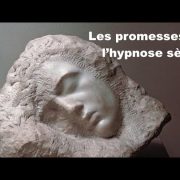Critical Incident Stress Debriefing (CISD) is a strategy with apparent therapeutic potential. In fact, it’s frequently used for the prevention of stress-related clinical entities. Some authors consider it to be a form of therapy. However, the method is more of a crisis support strategy than a consolidated psychological treatment protocol.
As a matter of fact, this strategy isn’t without criticism because, as you’ll see later, it has the power to feed back stress and increase trauma in people who’ve suffered distressing events. We’re going to explain this technique that was developed in the 70s, by J.T. Mitchel.
“Available data provide clues about possible harmful effects, such as re-traumatization or the risk of delayed access to other interventions.”
-Eduardo Fonseca Pedrero-
Critical Incident Stress Debriefing
The objective of Critical Incident Stress Debriefing (CISD) is to lessen the psychological consequences of potentially traumatic events. It’s structured by way of a series of well-defined phases (Fonseca-Pedrero et al, 2021):
- Introduction. The client receives information about how CISD works, promoting conversation or narration of certain aspects of the event. After the presentation of each component, the expectations that they have about the strategy are evaluated. If they’re too high, they’re adjusted.
- Narrative of events. The participant is asked different questions. For example, “What happened?”, “How did you experience it?”, “How did it happen?” or “How did it make you feel?”.
- Sharing thoughts and reactions around the traumatic event. The objective of this phase is twofold. It seeks to promote the understanding of the individual’s reactions to the event. At the same time, it tries to facilitate the labeling of the resulting emotions.
- Analyze emotional reactions. In this phase, the emotional ventilation of fear, anger, and frustration is pursued. The aim is that members of the group support and comfort each other.
- Normalizing. It seeks to validate the individual’s reactions, both emotional and behavioral, to the stressful event.
- Planning for the future and facing the present. The aim is that, after the intervention, the individual anticipates the symptoms that’ll occur in the days to come. For example, insomnia or intrusive memories.
- Dissolution of the group. In this phase, the participant can ask as many questions as they need. After that, they’re provided with information on other healthcare and professional resources to turn to if they consider it necessary. For instance, the hospital.
Relief of post-event stress
Among the objectives that are pursued through CISD is the early relief of post-event stress. It also seeks to promote the identification, labeling, and description of lived emotional experiences, reactions, and thoughts. However, despite the good intentions of the strategy, it can be detrimental if misused.
“People exposed to a traumatic event should receive psychological therapy as a first measure, even before medication or debriefing.”
-Eduardo Fonseca-Pedrero-
Criticisms of CISD
You might think that the victim of an assault, attack, natural disaster (in short, a potentially traumatic event ) would find relief by verbally venting their emotions. However, this can be counterproductive. In fact, although verbal venting with the goal of preventing post-traumatic stress disorder (PTSD), is helpful for up to 24 to 72 hours after the event, if it’s done too much, it can cause the opposite effect. There’s scientific evidence to back this fact up.
As a rule, a memory takes about six hours to consolidate. For consolidation to occur, the ideal is to be relaxed and, if possible, asleep. To prevent PTSD, it’s important that the individual stays busy and active, rather than relaxed and asleep for six hours after the event.
The goal is to keep the victim away from the memory consolidation window. Moreover, it’s recommended, with some prudence, to refrain from the prescription of hypnotic drugs during the first night after the trauma.
Making use of CISD before 24 hours after the event can have a re-traumatizing effect. This is because it can reinforce the consolidation of the memory of the event in the memory. In effect, it’s important to “give the individual time to digest what’s happened.”
“Available data provide clues about possible harmful effects, such as re-traumatization or the risk of delayed access to other interventions.”
-Eduardo Fonseca-Pedrero-

Is CISD really useful?
CISD can be useful within a group therapeutic strategy, up to 72 hours and 14 days after the event. It’s also important to allow the victim to choose if they want to vent their emotions and memories or if they prefer to remain silent.
As you can see CISD has the potential to exert traumatic effects on individuals who’ve been subjected to stressful events. Indeed, despite the fact that this strategy was developed with the best intentions, research in neurosciences and the results of efficacy and effectiveness tend to advise against it (Fonseca-Pedrero et al, 2021).
“According to the levels of evidence established in different guidelines, for example, NICE, it should not be a routine clinical practice, due to its lack of efficacy and effectiveness.”
-Eduardo Fonseca-Pedrero-
The post Critical Incident Stress Debriefing (CISD) appeared first on Exploring your mind.



















Comments